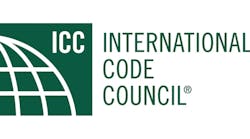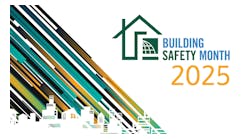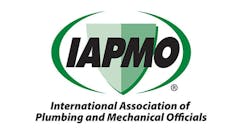Sponsored

The virtues of off-site construction—also called prefabrication or modular construction—are well known to the industry. Working in a facility means a safer, more controlled, more efficient environment—less like a job site and more like a factory floor. That can create savings in material, manpower, energy costs and more. Apart from acting as a workforce multiplier, off-site construction is ideal for multifamily applications (with repeating layouts) which makes it an important tool for tackling the nation’s housing crisis.
Currently, a patchwork of state and local regulations hampers the widespread adoption of off-site construction. Different regulations from state to state creates confusion that can lead to delays and increased costs. Misunderstandings and a lack of expertise can complicate inspections and approvals.
Luckily, the International Code Council (ICC) has come up with a suite of standards to bring some order and sanity to the off-site situation: ICC/MBI 1200, 1205 and 1210. CONTRACTOR spoke to Ryan Colker, Executive Director, Energy Resilience and Innovation at ICC to get the facts.
CONTRACTOR: Can you tell us a bit about how these standards came about in the first place?
Colker: Well first, recognizing a lot of the challenges that industry and society are going through, such as workforce availability and housing affordability. Add to that, obviously, sustainability. These areas called for solutions and offsite construction is a key mechanism to address them.
We saw one of the key barriers to advancing offsite construction was the regulatory landscape. Offsite construction is regulated in 39 states at the state level and any offsite elements need to go through those programs. However, each of those programs operates a little bit differently. Do they cover just volumetric? Do they cover just commercial? Just residential? Do they allow third party plan review and inspection, or must all those activities be conducted by the state?
So, if you're looking to build a factory that's supporting multiple states, that landscape eats into the efficiency of the factory. At the same time, there are several states that don't have statewide programs, so the entire offsite construction approval-review-inspection process falls to local officials, who often don't have the capacity or the expertise to support these projects.
So, we saw a real opportunity to help streamline that process. That's really how the standards were born.
CONTRACTOR: Can you break down the differences between the standards?
Colker: The standards are mostly process focused. They do not dictate what would normally be included, say, in the building code. 1200 and 1205 were the first ones, created in collaboration with the Modular Building Institute. They’re companion standards, targeted at slightly different players in the space.
1200 covers the design and manufacturing side of the process. What do you need to include on construction drawings? What sort of quality assurance process do you need to have in the factory, and how will that support the review and inspection process? How do you differentiate between on-site and offsite constructed elements?
1205 covers the review and inspection process. You know, in an offsite construction context, a lot of activity is happening in a factory, which could be hundreds or thousands of miles away, from the job site, and the local code official has no visibility into sort of what's going on in that factory.
So, 1205 lays out the process whereby plans are reviewed, and the in-factory work is inspected so that when it does get to the local job site the local code official knows exactly what they're getting and that it all meets the requirements of the building code.
1210 is strictly focused on MEP systems, energy efficiency and water conservation in offsite construction.
CONTRACTOR: I understand both Colorado and Rhode Island have recently adopted the new standards?
Colker: Yes, we’re seeing a lot of positive response. In January, Standards 1200, 1205 and 1210, as well as Guideline 6: A Guideline on Advanced Panelization became effective in the state of Colorado. Colorado is the second state to adopt 1210 (along with Rhode Island) and the first to adopt Guideline 6. The other states to adopt 1200 and 1205 are Virginia, Utah and Montana.
CONTRACTOR: What is Guideline 6 all about?
Colker: Basically, it’s a new approach to things like panelized systems, treating them more like products, and giving them product-level approval. Guideline 6 explores what that would look like, and what measures would be needed to make that effective.
It has a lot of potential for things like, say, bathroom pods, or even mechanical pods. You would be able to package, for example, solar inverters into a self-contained unit. And, in the future, if you have a unit in place in, for instance, a multifamily building, then as technology changes and gets more efficient a contractor could simply pull out the old unit, put in the new unit and easily capture a lot of future energy saving opportunities. I think that's certainly an evolving area.
Steve Spaulding | Editor-inChief - CONTRACTOR
Steve Spaulding is Editor-in-Chief for CONTRACTOR Magazine. He has been with the magazine since 1996, and has contributed to Radiant Living, NATE Magazine, and other Endeavor Media properties.


